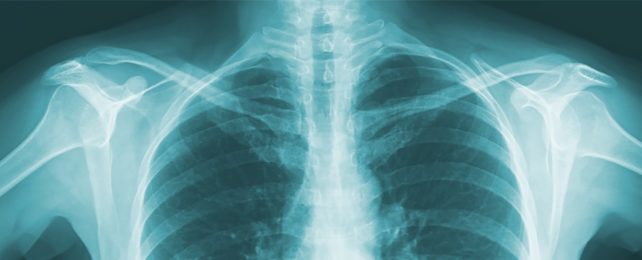The sacrifices a primate mother must make to bear her young literally run bone deep. A new study on macaques has found pregnancy can leave a permanent mark on the skeleton.
Following the birth of a child, female macaques show significantly lower calcium, phosphorus, and magnesium concentrations in their bones compared to those who haven't experienced pregnancy.
While this particular study didn't look at humans, the findings help inform how major life events can leave a signature in the skeletal tissues of primates in general.
Though they might seem like the concrete pillars on which fleshy bodies grow, primate bones are surprisingly dynamic. Bones gradually grow wider throughout life, the annual fluctuations in growth often impacted by lifestyle factors.
Most of us know that bone density can be lost with age, especially after menopause, but throughout life, sickness, diet, climate, and pregnancy might leave a permanent record in calcified tissues that can be 'read' in the afterlife.
During human pregnancy, evidence suggests the mother's body can actually pull calcium from her bones where insufficient quantities of the nutrient are eaten, decreasing the mass, makeup, and density of her skeleton for a while.
When lactating, a mother's bones are actually 'resorbed' into her blood stream to make enough calcium-rich milk. The lost minerals are easily restored once lactation ceases, but even then, there could be a way for scientists to notice the momentary lapse.
In forensics and archaeology, identifying if someone has been pregnant using only their bones is controversial work. Signs on the pelvis from childbirth have been called unreliable, and today, methods and interpretations for this work vary widely. Perhaps it's time we looked deeper inside the bones instead.
"Our research shows that even before the cessation of fertility the skeleton responds dynamically to changes in reproductive status," says anthropologist Paola Cerrito from New York University.
"Moreover, these findings reaffirm the significant impact giving birth has on a female organism – quite simply, evidence of reproduction is 'written in the bones' for life."
The study is only based on seven naturally deceased rhesus macaques, four of whom were female, but even among this limited group, femur (thigh) bones showed relative changes that could only be explained by pregnancy and lactation.
Compared to males and females who had not born young, the two macaques that had reproduced in their lifetimes showed relatively different bone composition, including lower calcium, phosphorus, and magnesium content.
The changes observed in calcium and phosphate density were linked to giving birth, while the decline in magnesium content coincided with breastfeeding.
The authors suspect their results are a sign of bone resorption during reproduction, but further studies are needed to say for sure.
"The findings regarding the elemental changes associated with reproduction are of relevance as the detection of parturitions from mineralized tissues is still a vastly unexplored area of research with significant implications for evolutionary, conservation and archaeological studies," the authors write.
More research is needed, preferably using representatives of wild primate populations, to see if the same can be said for other animals.
It's possible, the authors say, "that the signal of reproductive events and weaning that we detected could bemasked, in wild populations, by physiological responses to changing diets and environments."
The study was published in PLOS ONE.
